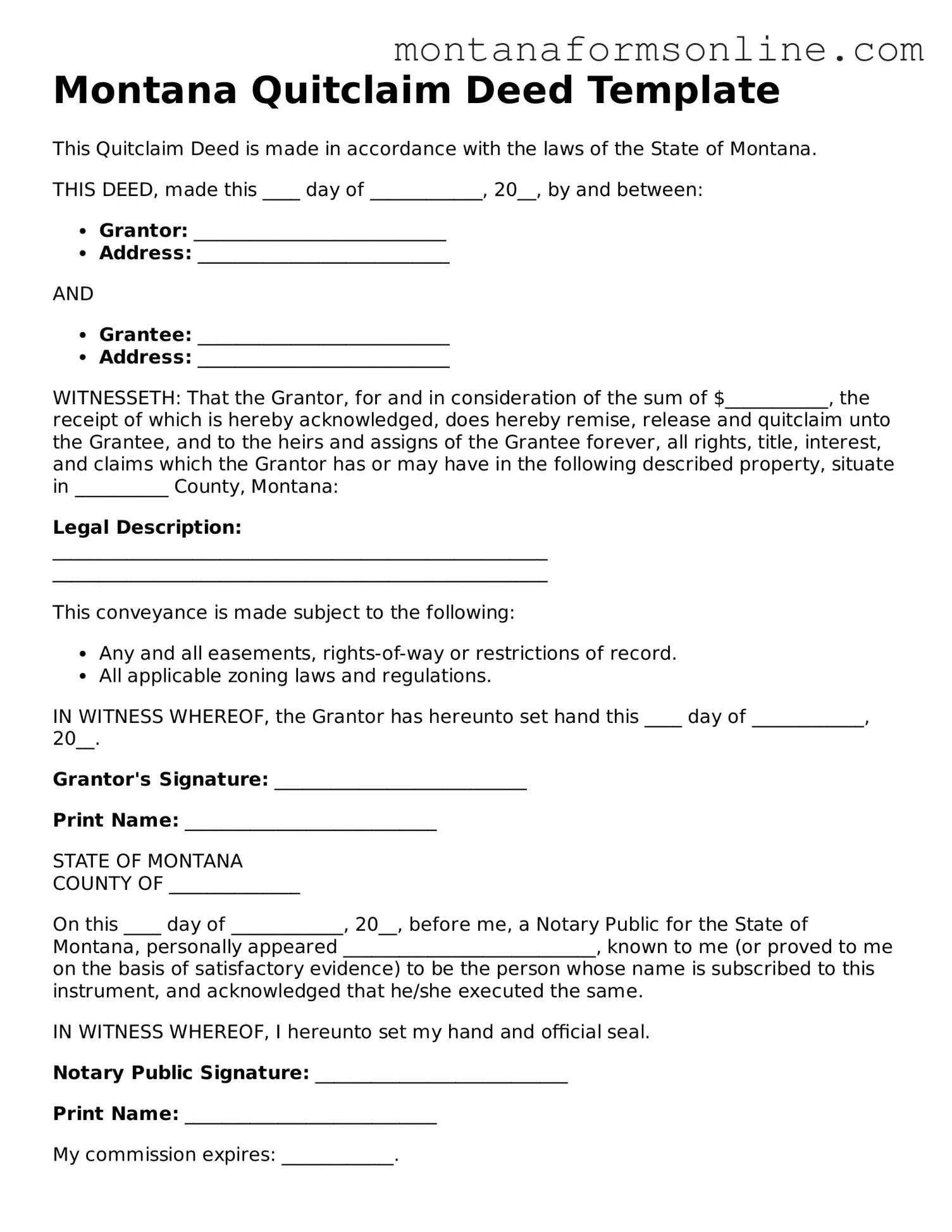Montana Quitclaim Deed Template
This Quitclaim Deed is made in accordance with the laws of the State of Montana.
THIS DEED, made this ____ day of ____________, 20__, by and between:
- Grantor: ___________________________
- Address: ___________________________
AND
- Grantee: ___________________________
- Address: ___________________________
WITNESSETH: That the Grantor, for and in consideration of the sum of $___________, the receipt of which is hereby acknowledged, does hereby remise, release and quitclaim unto the Grantee, and to the heirs and assigns of the Grantee forever, all rights, title, interest, and claims which the Grantor has or may have in the following described property, situate in __________ County, Montana:
Legal Description:
_____________________________________________________
_____________________________________________________
This conveyance is made subject to the following:
- Any and all easements, rights-of-way or restrictions of record.
- All applicable zoning laws and regulations.
IN WITNESS WHEREOF, the Grantor has hereunto set hand this ____ day of ____________, 20__.
Grantor's Signature: ___________________________
Print Name: ___________________________
STATE OF MONTANA
COUNTY OF ______________
On this ____ day of ____________, 20__, before me, a Notary Public for the State of Montana, personally appeared ___________________________, known to me (or proved to me on the basis of satisfactory evidence) to be the person whose name is subscribed to this instrument, and acknowledged that he/she executed the same.
IN WITNESS WHEREOF, I hereunto set my hand and official seal.
Notary Public Signature: ___________________________
Print Name: ___________________________
My commission expires: ____________.
